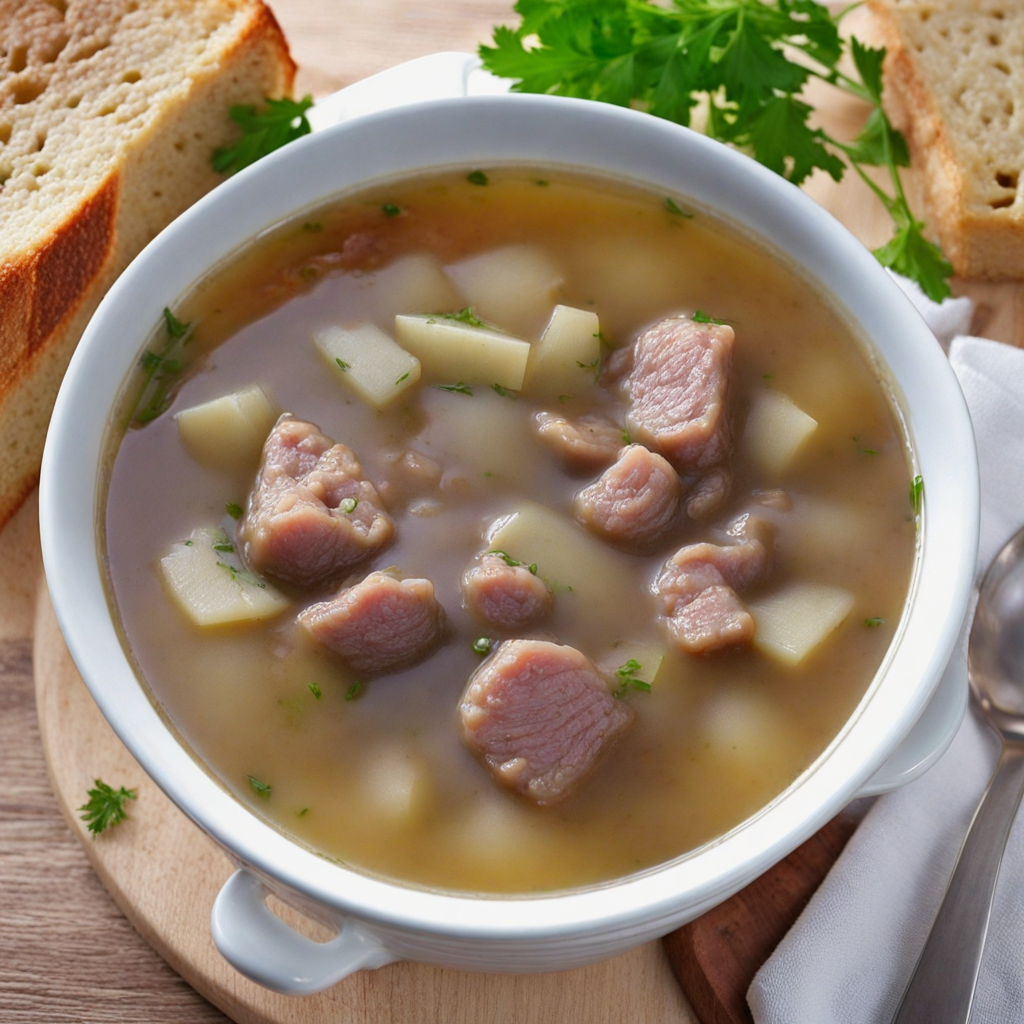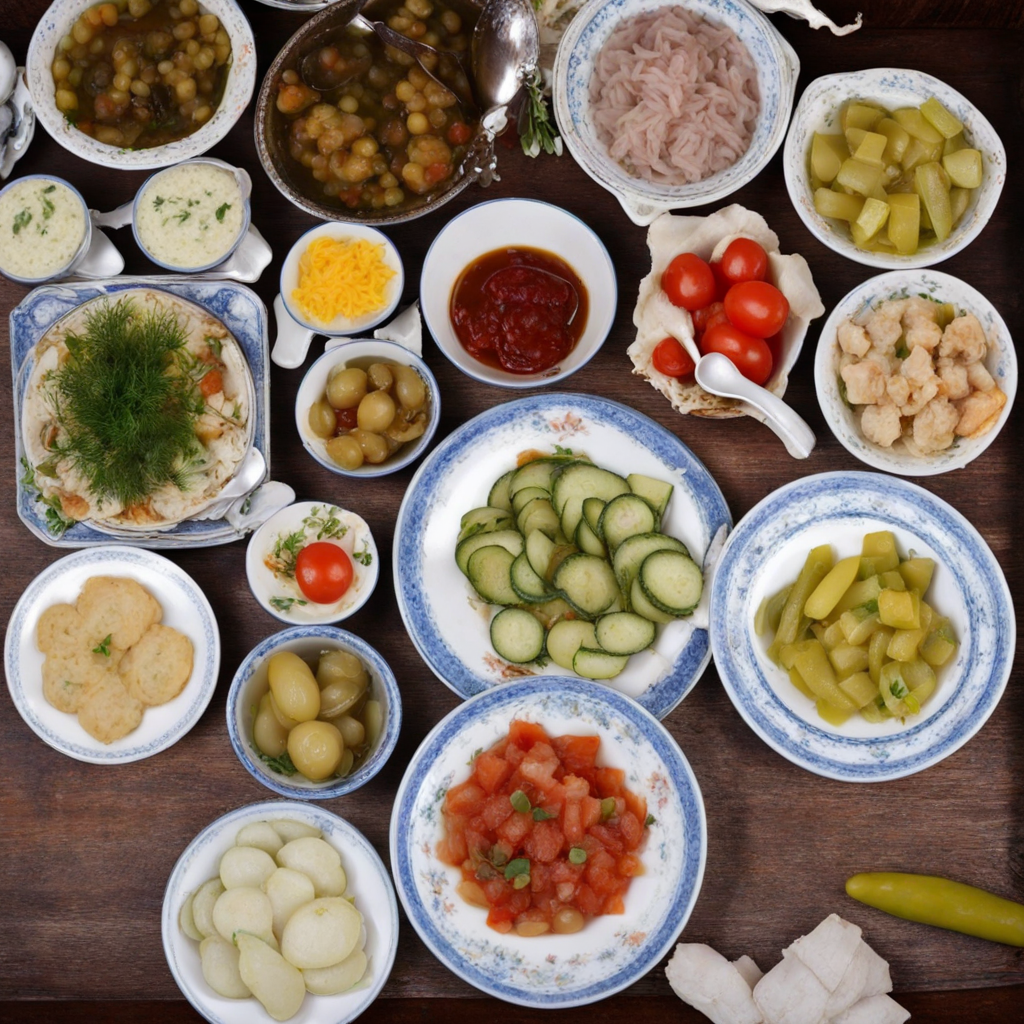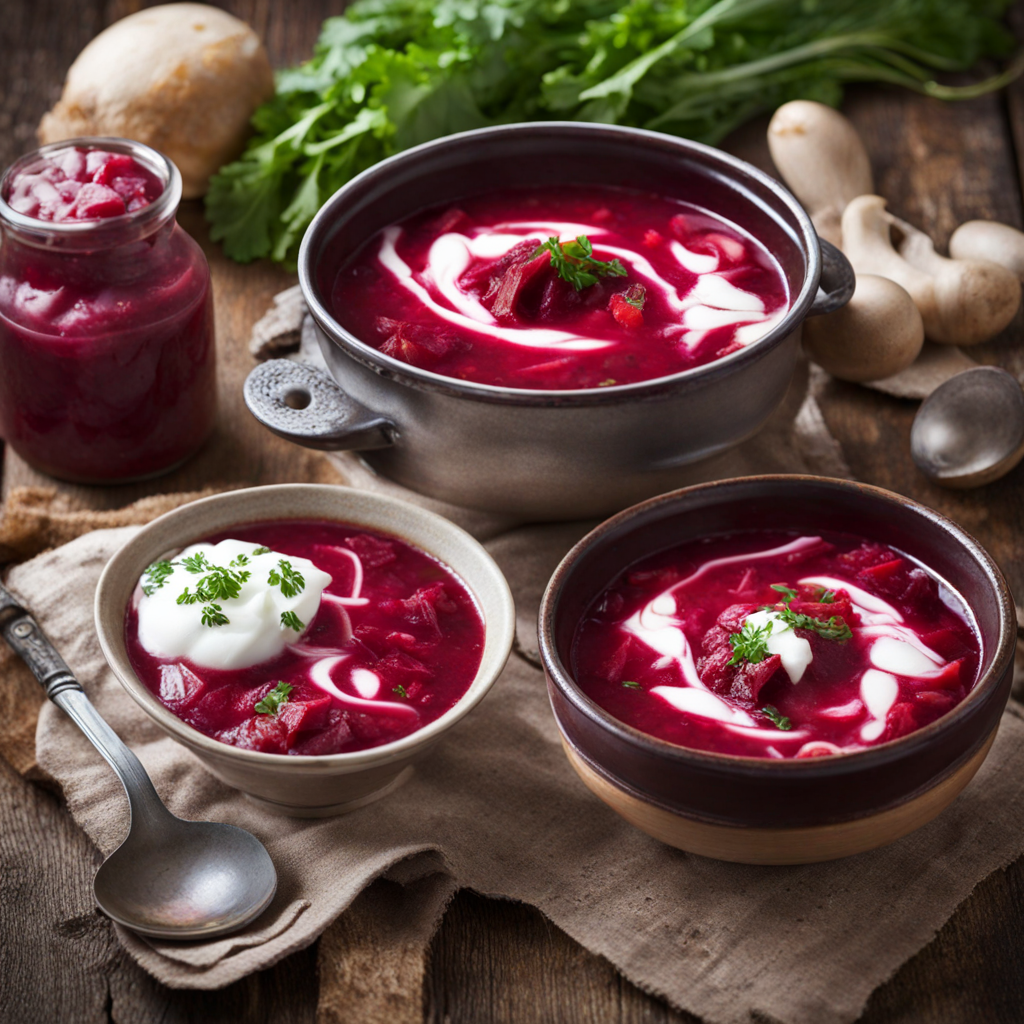Rassolnik
Rassolnik is a traditional Russian soup that offers a unique blend of flavors and textures, making it a delightful dish for anyone eager to explore new culinary experiences. At its core, Rassolnik is a hearty concoction featuring a base of meat, often beef or pork, simmered to tender perfection in a rich broth. The inclusion of pickled cucumbers is what sets this dish apart, infusing it with a tangy zest that complements the savory meat beautifully. Adding to its complexity, the soup is often enriched with barley, which lends a satisfying chewiness, and a medley of vegetables such as carrots, potatoes, and onions that contribute to its robust flavor profile. One of the most distinctive characteristics of Rassolnik is its use of brine, typically derived from the pickled cucumbers. This brine not only adds a salty kick but also enhances the soup's overall depth, creating a balance between the savory and sour elements. The dish is often seasoned with spices like black pepper and bay leaves, which elevate its aroma and taste. Each bowl of Rassolnik is a warm embrace, perfect for cold days or when you're in need of comfort food that tells a story of tradition and home-cooked warmth. Rassolnik is traditionally served hot and can be garnished with fresh herbs like dill or parsley, adding a touch of freshness to each spoonful. It is a dish that embodies the essence of Russian cuisine, where simple ingredients come together to create something truly special. Whether enjoyed at a family gathering or in a cozy restaurant, Rassolnik invites you to savor the rich heritage of Russian flavors, making it a must-try for adventurous food lovers.
How It Became This Dish
The History of Рассольник: A Russian Culinary Tradition #### Origins of Рассольник Рассольник, a traditional Russian soup, has roots that trace back to the medieval period. Its name derives from the Russian word "рассол," which means "brine" or "pickle juice." Historically, this soup was a way to utilize leftover brine from pickled cucumbers, a staple in the Russian diet. The brine was combined with various other ingredients to create a hearty, flavorful dish that reflected the resourcefulness of the Russian peasantry. The earliest mentions of рассольник can be found in culinary texts dating back to the 17th century. It was initially prepared with meat, often using beef or pork, and included barley or millet as the base grain. The recipe was relatively simple, emphasizing the use of local ingredients that were readily available, which included root vegetables, sour cream, and of course, pickled cucumbers. The tradition of using brine in soups was not unique to Russia, but the specific combination of ingredients and flavors is distinctly Russian. #### Cultural Significance Рассольник is more than just a dish; it embodies the Russian spirit of communal eating and hospitality. It reflects the agricultural lifestyle of rural Russia, where preserving food through pickling was essential for survival during the harsh winters. The soup was often prepared in large batches, making it a perfect dish for family gatherings or community events. In addition to its practical benefits, рассольник also holds a place in Russian folklore and cultural identity. It is often associated with the home and the hearth, symbolizing warmth and comfort. Traditionally, it was served during holidays and celebrations, adding to its significance as a comfort food that brings people together. The dish has evolved over time, with various regional variations emerging across Russia. Each region added its unique twist, such as the inclusion of smoked meats in the North or the use of fish in coastal areas. This adaptability speaks to the diversity of Russian cuisine and the importance of local ingredients. #### Development Over Time By the 19th century, рассольник had become a popular dish in Russian households and restaurants alike. It was commonly served in taverns and inns, reflecting its status as an everyday dish that was both filling and economical. The Industrial Revolution brought about changes in the way food was produced and consumed, which in turn affected traditional recipes like рассольник. As urbanization increased, the availability of canned and preserved foods changed the way people prepared рассольник. Canned pickles and other ingredients made it easier for city dwellers to recreate this rustic dish. Cookbooks from the time began to include variations of the soup, with some recipes calling for the use of rice instead of barley and the addition of potatoes, which had become a staple in the Russian diet. The Soviet era further transformed рассольник. The government promoted the concept of "socialist cuisine," which aimed to homogenize regional dishes into a more standardized national identity. This led to the popularization of a specific version of рассольник that became common in Soviet kitchens. The ingredients were often simplified due to rationing and the limitations of availability, focusing on the essentials—meat, pickles, and grains. In the post-Soviet period, as Russia opened up to global influences, there was a resurgence of interest in traditional foods, including рассольник. Chefs began to explore regional variations and elevate the dish beyond its humble origins. Modern interpretations often include gourmet twists, such as using organic vegetables, artisanal pickles, and innovative cooking techniques, while still honoring the essence of the original recipe. Today, рассольник remains a beloved dish in Russia, enjoyed by families and served in restaurants across the country. It is often featured during festive gatherings, especially in the winter months, when hearty soups are particularly comforting. The soup's enduring popularity underscores its status as a symbol of Russian culinary heritage. #### Contemporary Perspectives In contemporary Russia, the appreciation for рассольник reflects a broader trend of revisiting and revitalizing traditional dishes. Chefs and home cooks alike are experimenting with the soup, incorporating new ingredients and flavors while staying true to its essence. There is a growing interest in the health benefits of traditional foods, and рассольник, with its nutritious ingredients, fits well within this movement. Moreover, the dish has gained recognition outside of Russia, thanks to the global fascination with Russian cuisine. Food enthusiasts and culinary explorers are discovering рассольник as part of the rich tapestry of Eastern European culinary traditions. It is often featured in food festivals and cultural events, showcasing its journey from humble peasant food to a celebrated dish on the international stage. #### Conclusion Рассольник is a culinary testament to the resilience and creativity of the Russian people. Its evolution from a peasant dish to a national favorite mirrors the broader changes in Russian society, culture, and cuisine. As it continues to adapt and thrive in modern kitchens, рассольник remains a cherished symbol of home, community, and the enduring legacy of Russian culinary traditions. Whether enjoyed in a cozy home or a contemporary restaurant, this soup serves as a reminder of the rich history and cultural significance embedded in every bowl.
You may like
Discover local flavors from Russia







